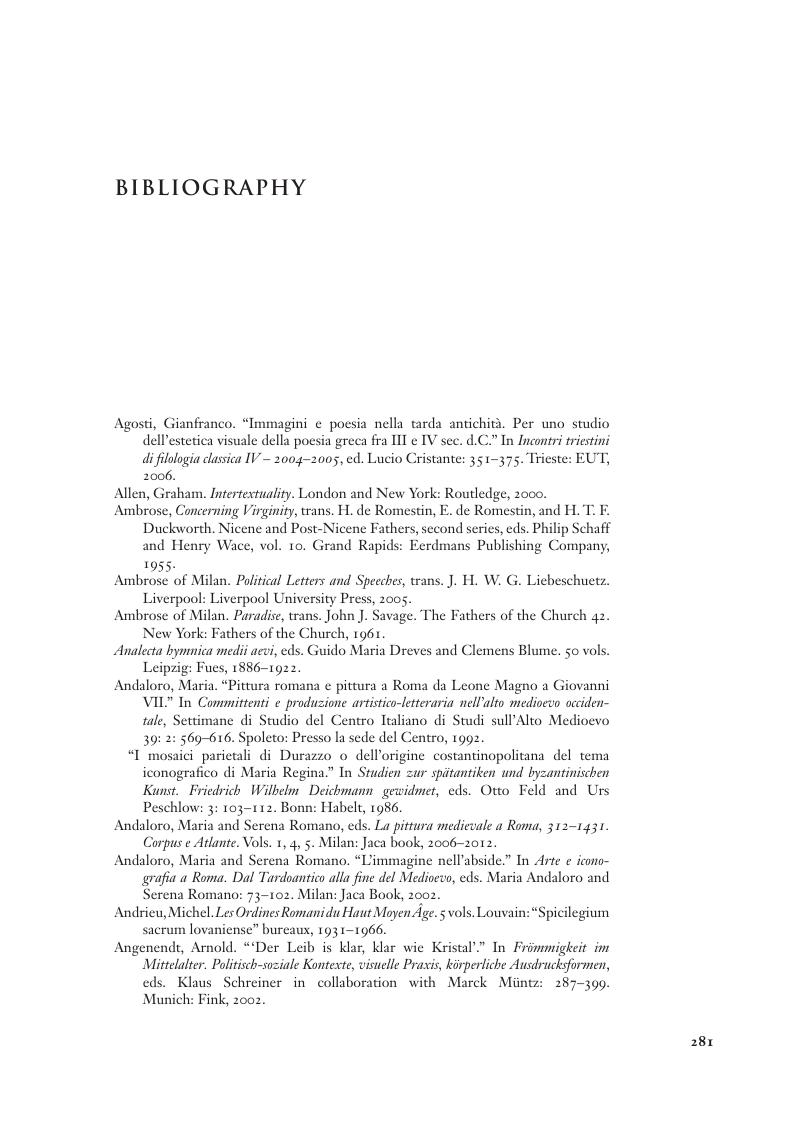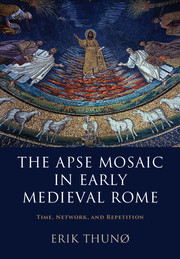Book contents
- The Apse Mosaic in Early Medieval Rome
- Dedication
- The Apse Mosaic in Early Medieval Rome
- Copyright page
- Contents
- Illustrations
- Acknowledgements
- Abbreviations
- Introduction
- Chapter One Repetition
- Chapter Two Transformation
- Chapter Three Incorporation
- Chapter Four Networking
- Afterword
- Appendix
- Notes
- Bibliography
- Index
- References
Bibliography
Published online by Cambridge University Press: 05 May 2015
- The Apse Mosaic in Early Medieval Rome
- Dedication
- The Apse Mosaic in Early Medieval Rome
- Copyright page
- Contents
- Illustrations
- Acknowledgements
- Abbreviations
- Introduction
- Chapter One Repetition
- Chapter Two Transformation
- Chapter Three Incorporation
- Chapter Four Networking
- Afterword
- Appendix
- Notes
- Bibliography
- Index
- References
Summary

- Type
- Chapter
- Information
- The Apse Mosaic in Early Medieval RomeTime, Network, and Repetition, pp. 281 - 316Publisher: Cambridge University PressPrint publication year: 2015



